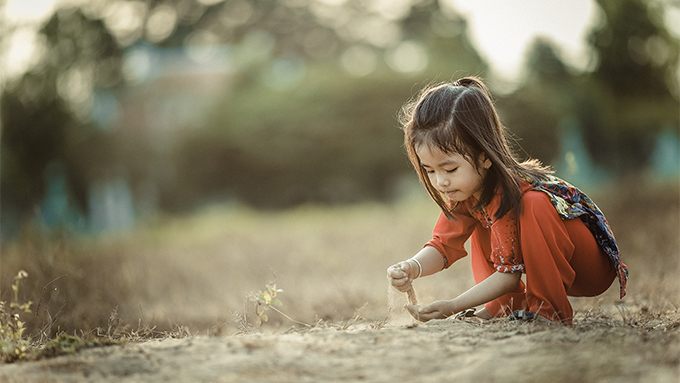The Relationship between Environmental Factors and the Incidence of Diarrhea in Toddlers in Java Island (2017 IDHS Data Analysis)

Downloads
Background: Toddler diarrhea is still a problem both globally and in Indonesia. Diarrhea remains one of the main causes of death among children under five. Environmental factors are one of the factors that can influence the incidence of toddler diarrhea.
Objectives: To determine the relationship between environmental factors including sources of drinking water, toilet facilities and hand washing facilities in affecting the incidence of diarrhea in children under five in Java Island.
Methods: This study uses a cross-sectional research design. The data used comes from the 2017 Indonesian Demographic and Health Survey (IDHS).. The study population was children under five in all provinces on the island of Java. The analytical method used is multivariate analysis with logistic regression.
Result: There is a significant effect between the variable sources of drinking water (OR=2.188), toilet facilities (OR=1.848), and hand washing facilities (OR=2.040) with toddler diarrhea.
Conclusion: Environmental factors, namely sources of drinking water, toilet facilities, and hand washing facilities, affect the incidence of toddler diarrhea on the island of Java.
Adisasmito, W. (2007) ‘Faktor Risiko Diare Pada Bayi Dan Balita Di Indonesia: Systematic Review Penelitian Akademik Bidang Kesehatan Masyarakat', Makara Journal of Health Reseach, 11(1), pp. 1–10.
Badan Kependudukan dan Keluarga Berencana Nasional (2013) Survei Demografi dan Kesehatan Indonesia 2012. Jakarta.
Badan Kependudukan dan Keluarga Berencana Nasional (2018) Survei Demografi dan Kesehatan Indonesia 2017. Jakarta. Available at: http://www.DHSprogram.com.
Balitbangkes Kemenkes RI (2018) Laporan Nasional RISKESDAS 2018. Jakarta.
Ira (2019) Menengok Perkembangan Diare Di Indonesia, MediaKom Kementerian Kesehatan RI. Available at: https://mediakom.kemkes.go.id/2019/08/menengok-perkembangan-diare-di-indonesia/ (Accessed: 5 February 2023).
Irianty, H., Hayati, R. and Riza, Y. (2018) ‘Hubungan Perilaku Hidup Bersih Dan Sehat (PHBS) Dengan Kejadian Diare Pada Balita', Promotif: Jurnal Kesehatan Masyarakat, 8(1), pp. 1–10. Available at: https://doi.org/10.56338/pjkm.v8i1.224.
Irwan (2017) Epidemiologi Penyakit Menular. I. Yogyakarta: CV. ABSOLUTE MEDIA .
Iryanto, A.A., Joko, T. and Raharjo, M. (2021) ‘Literature Review : Faktor Risiko Kejadian Diare Pada Balita Di Indonesia', Jurnal Kesehatan Lingkungan, 11(1), pp. 1–7. Available at: https://doi.org/10.47718/jkl.v11i1.1337.
Kurniawati, D.P. et al. (2021) ‘Poor Basic Sanitation Impact on Diarrhea Cases in Toddlers', JURNAL KESEHATAN LINGKUNGAN, 13(1), p. 41. Available at: https://doi.org/10.20473/jkl.v13i1.2021.41-47.
Notoatmodjo, S. (2003) Ilmu Kesehatan Masyarakat. I. Jakarta: Rineka Cipta.
Prakoso, I.D. (2020) ‘Correlation Between Access Of Drinking Water And Sanitation With Diarrhea Incidence In East Java', Jurnal Berkala Epidemiologi, 8(1), p. 42. Available at: https://doi.org/10.20473/jbe.V8I12020.42-49.
Rohmah, N. and Syahrul, F. (2017) ‘Relationship Between Hand-washing Habit and Toilet Use with Diarrhea Incidence in Children Under Five Years', Jurnal Berkala Epidemiologi, 5(1), pp. 95–106. Available at: https://doi.org/10.20473/jbe.v5i1.
Samiyati, M., Suhartono and Dharminto (2019) ‘Hubungan Sanitasi Lingkungan Rumah Dengan Kejadian Diare Pada Balita Di Wilayah Kerja Puskesmas Karanganyar Kabupaten Pekalongan', Jurnal Kesehatan Masyarakat, 7(1), pp. 388–395. Available at: https://doi.org/https://doi.org/10.14710/jkm.v7i1.23008.
Sumampouw, O.J. et al. (2017) Diare Balita - Suatu Tinjauan dari Bidang Kesehatan Masyarakat. II. Yogyakarta: Deepublish.
Wibowo, T.P. (2021) Pemodelan Regresi Logistik Biner Pada Kejadian Diare Balita Berdasarkan Survei Demografi Dan Kesehatan Indonesia Tahun 2017. Airlangga University.
World Health Organization (2022) Diarrhoea, UNICEF Data. Available at: http://www.who.int/topics/diarrhoea/en/.
Copyright (c) 2023 Aditya Fika Maulana, Hari Basuki Notobroto

This work is licensed under a Creative Commons Attribution-ShareAlike 4.0 International License.
Media Gizi Kesmas by Unair is licensed under a Creative Commons Attribution-ShareAlike 4.0 International License.
1. The journal allows the author(s) to hold the copyright and to retain the publishing right of the article without restrictions.
2. The legal formal aspect of journal publication accessibility refers to Creative Commons Attribution-Share-Alike (CC BY-SA).
3. The Creative Commons Attribution-Share-Alike (CC BY-SA) license allows re-distribution and re-use of a licensed work on the conditions that the creator is appropriately credited and that any derivative work is made available under "the same, similar or a compatible license”. Other than the conditions mentioned above, the editorial board is not responsible for copyright violations.



















